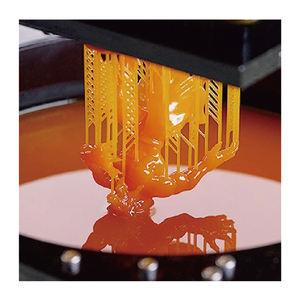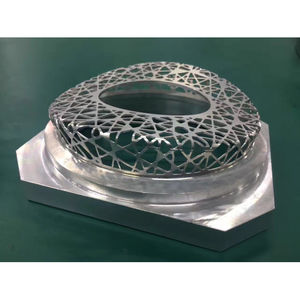From Plastic to Pancakes: The Wild World of 3D Printing Materials Today
(How Many Materials Available To 3d Print Now)
Imagine a machine that can print a bicycle, a burger, or even a human ear. Sounds like science fiction? Not anymore. The world of 3D printing has exploded with materials so weird, so creative, you’ll wonder if someone swapped reality with a sci-fi movie script. Let’s dive into the treasure chest of options available right now.
Start with the basics. Plastic still rules the 3D printing scene. PLA and ABS plastics are everywhere. They’re cheap, easy to use, and perfect for hobbyists printing phone cases or toy dinosaurs. PLA even smells like pancakes while printing—bonus points for making your workshop smell like breakfast. ABS is tougher, great for parts that need to survive a drop or two. But plastic is just the tip of the iceberg.
Metals are crashing the party. Titanium, stainless steel, aluminum—these aren’t just for factories anymore. 3D printers now melt, laser, or glue metal powders into solid shapes. Aerospace companies print rocket parts. Dentists craft custom crowns. Artists build metal sculptures that twist like ribbons. The catch? These machines cost more than a luxury car. Still, imagine holding a wrench printed in space-grade titanium. Cool, right?
Ceramics are here too. Delicate teacups, intricate vases, even heat-resistant engine parts—all popped out of a printer. The process involves layering ceramic paste, then baking it like a futuristic pottery kiln. Unlike grandma’s china, these pieces survive microwaves and dishwashers. Architects love printing ceramic tiles with patterns too complex for human hands.
Now, let’s get weird. Wood? Yep. Mix sawdust with plastic, and you get filament that looks, smells, and sands like real wood. Print a rustic picture frame or a coffee mug that feels straight out of a log cabin. Food printers get even wilder. Chocolate, cheese, dough—they squirt edible layers into wedding cake toppers or pizza shapes. One day, you might print a steak. Today, it’s mostly squiggly desserts.
Biomaterials cross into “are we allowed to do this?” territory. Scientists print living cells using “bioinks” made of collagen or algae. Skin grafts for burn victims. Cartilage for knee repairs. Researchers even printed a tiny heart using human cells. It doesn’t beat yet, but it’s a start. Ethical debates? Sure. But the potential to save lives is huge.
Recycled materials turn trash into treasure. Old water bottles become filament for garden planters. Crushed construction waste transforms into concrete for printing house walls. One company grinds used sneakers into printer material for new shoes. Eco-warriors, rejoice—your 3D printer could fight climate change.
Flexible materials bend the rules. Rubber-like filaments make phone cases you can twist, shoe soles that bounce, or prosthetics that move like real limbs. Print a stress ball in the shape of your face. Why not? Silicone printers go further, creating medical devices or kitchen gadgets that stretch without breaking.
Conductive inks let you print circuits. Flash a LED by pressing a printed button. Build a robot arm with wiring baked into its plastic bones. Schools use these inks to teach electronics without soldering irons. Hobbyists make glowing Halloween costumes. The line between “printer” and “mad scientist lab” is blurring fast.
The list keeps growing. Sandstone powders create stone-like statues. Transparent resins mimic glass. Glow-in-the-dark filaments light up kids’ toys. Some printers mix materials mid-job—stiff plastic for a tool’s handle, soft rubber for its grip. Others blend colors like a digital painter.
Costs vary. A spool of basic plastic costs less than pizza. Fancy metal powders? That’s a mortgage payment. But prices drop yearly. Libraries and schools offer cheap access to high-end printers. Online services let you upload a design and mail you the printed object.
Limits exist. Not all materials work on home printers. Some need lasers, ovens, or chemical baths. Printing a full car? Possible, but you’ll need a warehouse-sized machine. Still, progress never stops. Ten years ago, 3D printing was a slow, plastic-only novelty. Today, it’s reshaping medicine, fashion, and even food.
(How Many Materials Available To 3d Print Now)
What’s next? Maybe printers that mix 10 materials at once. Maybe downloadable blueprints for everything from furniture to faux diamonds. One thing’s clear—the 3D printing material menu keeps expanding. Whatever you dream up, there’s likely a way to print it. Breakfast-scented wrench, anyone?
Inquiry us
if you want to want to know more, please feel free to contact us. (nanotrun@yahoo.com)

